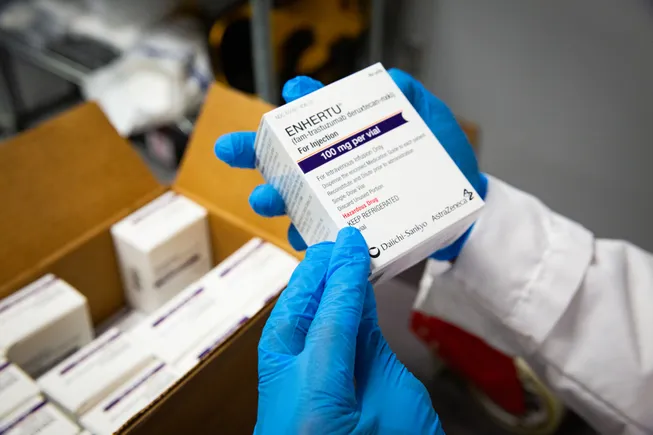When Health Becomes Highway Hazard
With 1 in 3 drivers only medically qualified for short-term certification, and FMCSA policy updates arriving next month, fleets must treat driver fitness like the operational risk it is. A house in New Jersey hit by a truck might have been spared. The next one might not. The post When Health Becomes Highway Hazard appeared first on FreightWaves.

When a commercial truck crashed into a house in New Jersey this week, the company’s owner attributed the crash to a medical emergency. There were no fatalities, but what about next time? In short, “it happens,” and this disturbingly common phrase in trucking exemplifies the very state of highways in the U.S. today.
That crash wasn’t bad luck. It was a symptom of something deeper: driver health. The trucking industry’s refusal to treat driver health as a foundational part of fleet safety is a considerable issue and entirely preventable.
Driver Health Is a Known Risk
According to FMCSA data, 13% of truck crashes involve driver nonperformance, like blackouts, heart attacks or other medical issues that cause a driver to lose control. The National Highway Traffic Safety Administration says a health issue directly causes 1 in 20 crashes involving a CMV.
Add in that the average truck driver’s life expectancy is just 61, while the general U.S. expectancy average is 79-80, and it becomes clear this is more than a fleet issue. This is a workforce supply chain crisis.
The Med Card Isn’t Just a Box to Check
Medical certification is required under 49 CFR Part 391, but what it actually tells you, how long the card is valid, matters. A two-year card signals stability. A six-month card means something is going on. A 30-day card is a warning. Come June 2025, that’s going to matter more than ever.
FMCSA medical certification changes arrive next month, and those new rules will soon require certified medical examiners to electronically submit all exam results to the FMCSA’s National Registry, which will forward that data directly to state licensing agencies. The days of carrying around a physical medical card are numbered, as is the ability to sidestep systemwide scrutiny.
That change means fleets that do not track med card durations and monitor driver health in real time are already behind.
Fitness, Risk and Your Driver Qualification File
A Driver Qualification File (DQF) is more than a checklist. It’s a predictive tool. It tells you who’s qualified to operate, not just in terms of skill but health and long-term capability.
Would you put a 70-year-old crop duster pilot with early heart failure in the cockpit of a 737? Then why hand the keys to an 80,000-pound vehicle to someone with uncontrolled sleep apnea and a 30-day med card?
Fleet safety is a consideration, but managing your fleet with risk in mind and running your fleet operation like an insurance company is a mindset. It’s also not all about the fleet vehicles; it has more to do with fleet operators. We have preventive maintenance programs for our assets, but we don’t have preventive maintenance for the drivers.
What Fleets Can Do
Coming from the private equity enterprise fleet oversight world after being a driver and small fleet owner, I know the boardroom consideration is often dollars rather than health. With that in mind, understanding this is an exposure management strategy is crucial. Here’s how forward-thinking fleets are reducing medical risk and increasing driver longevity:
- Set Internal Fitness Policies. Refuse to hire drivers with less than 1-year med cards unless medically reviewed. Use short-term certifications as internal risk triggers, not afterthoughts.
- Track Medical Card Data. Systems like Motive’s Workforce Management, Tenstreet and SambaSafety allow real-time tracking of certification duration and help flag drivers before their health becomes a risk.
- Initiate Wellness Incentives. Programs like Mark Manera’s Offshift or Bob Perry’s The Trucker Trainer offer scalable coaching and health improvement for drivers. Fleets using similar programs report up to 30% lower workers’ comp costs and 60% fewer lost-time injuries.
- Build Alternative Placement Pipelines. Consider reassigning long-tenured drivers with worsening health to in-yard, dispatch or safety roles. This will preserve their experience and reduce their on-highway exposure.
- Engage With Project 61 and Peer Leaders. Initiatives like Jeremy Reymer’s Project 61, Michael Lombard’s or Nick Klingensmith’s work on driver health, and wellness-focused partners are shifting the conversation toward longevity. Your fleet should be part of it.
The Numbers Matter
- About 1 in 3 drivers hold short-term med cards.
- Some 300,000 CDL holders were sidelined in 2023 due to expired or downgraded med certs.
- Half of drivers have at least two chronic medical conditions.
- Medical-related crashes often cost over $500,000, even without a fatality.
- Fleets with proactive health programs report 85% driver participation and improved med card renewals.
Crash Risk Is Not Just Mechanical. It’s Metabolic.
Driver health isn’t random. It’s predictable, and if it’s manageable. The crash in New Jersey was not an anomaly. I have seen more than one driver die behind the wheel on video. These events are warning shots. The next one might not end with zero fatalities. That’s why the best fleets track health indicators, not just oil changes and logbooks. Caring about your drivers means doing more. It means building it into your business model and your culture.
The post When Health Becomes Highway Hazard appeared first on FreightWaves.





















































































































































